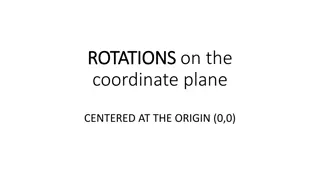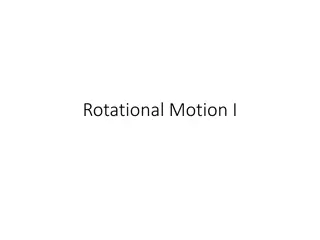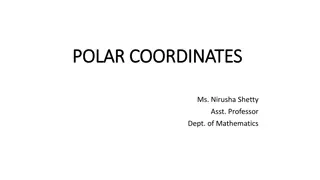Rotations on the Coordinate Plane
Rotations on the coordinate plane involve turning points either clockwise or counterclockwise around the origin. Different rotations like 90, 180, 270, and 360 degrees have specific rules and effects on the coordinates. It's important to know how to symbolically represent rotations and understand th
2 views • 8 slides
Rotational Motion and the Radian
Rotational motion involves rotation around a fixed axis, while the radian measures angular displacement. The relationship between translational and rotational motion is explored, defining angular velocity and differentiating between clockwise and counterclockwise rotations. Examples illustrate the c
0 views • 23 slides
Moments and Their Effects on Rotation
Moments in physics refer to the tendency of a force to rotate an object about an axis. This content explains how forces can create moments that lead to rotation, the calculation of moments using vectors, clockwise and counterclockwise moments, zero moments, and Varignon's Theorem. Through practical
1 views • 12 slides
Dive into Rotations: Exploring Shapes and Movement
Delve into the concept of rotations illustrating how shapes can be moved and turned, akin to rotating through different classes in a day. Understand clockwise and counterclockwise movements alongside practical examples and engaging visuals. Discover websites demonstrating rotations, and practice han
0 views • 29 slides
Polar Coordinates in Mathematics
Polar coordinates define the location of a point in terms of distance and angle from an origin. The distance is denoted by "r" and the angle by "?". However, the angle is not unique for a point. The concept involves fixing an origin and an initial ray, with positive angles measured counterclockwise.
0 views • 7 slides




